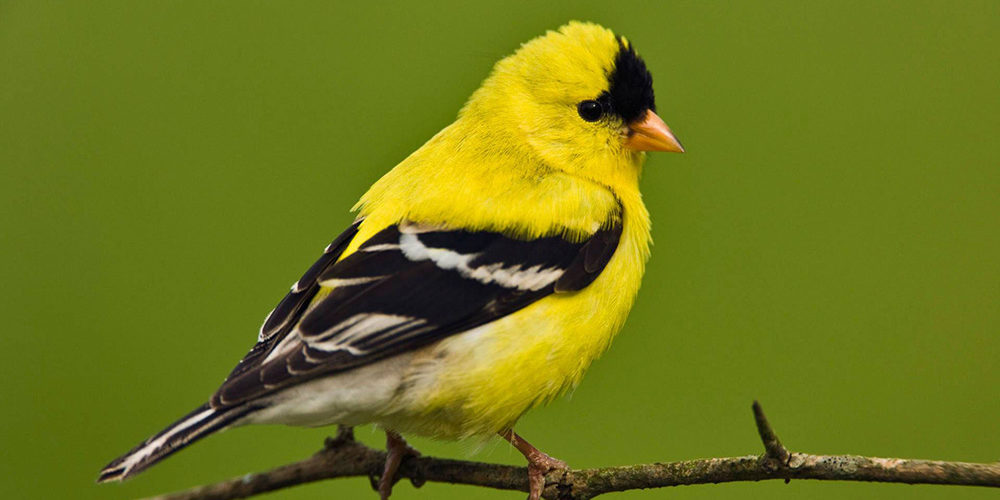Bird of The Week: American Goldfinch
BIRD OF THE WEEK: American Goldfinch
SCIENTIFIC NAME: Spinus tristis
POPULATION: 43 million
TREND: Stable
HABITAT: Weedy grasslands, fields, and meadows; also open woodland, orchards, suburbs, and gardens
“The goldfinch is an active little bird, always in the best of spirits,” observed noted naturalist Arthur Cleveland Bent early in the 20th century. “It has a definite personality exemplifying light-hearted cheerfulness, restlessness, sociability, and untiring activity.” Famed ornithologist Roger Tory Peterson made a similar observation: “The responsibilities of life seem to rest lightly on the Goldfinch’s sunny shoulders.”
Unlike more rarely seen relatives such as the Pine Siskin and Evening Grosbeak, this widespread finch is a familiar sight year round, although most colorful in the breeding season. It only begins to nest late in the summer, later than almost any other North American songbird. Why?
The Secret is the Seed
The American Goldfinch only begins nesting from late July to September, when most other songbirds are winding down breeding activity. This timing coincides with the abundance of their chief food source — seeds — in the late summer months. Almost any sort of seed will do. Thistles are favored, but this goldfinch readily feeds on a wide variety of weed, flower, tree, and grass seeds, as well as buds, sap, berries, and, less commonly, insects.
This species has several adaptations suited to its granivorous (seed-eating) diet, including a strong, conical bill that easily gathers and splits seed, and dexterous legs and feet, which allow the American Goldfinch to easily scramble up and down plant stems and hang from seed heads while feeding, thereby accessing seed sources unavailable to other birds.
Quick-Change Artist
A male American Goldfinch in breeding plumage is easy to recognize: a bright, sunny yellow with jet-black wings and cap. Like other common feeder birds such as the Northern Cardinal or Dark-eyed Junco, the American Goldfinch is a sexually dimorphic species, with the female much drabber than the eye-catching male. In the goldfinch’s case, this difference is especially apparent during the nesting season. In the winter, both sexes look much more alike, with feathers of brown, olive, and dull yellow-green, accented by buff or white markings. This noticeable change in the male’s plumage leads some people to believe that American Goldfinches are absent in the winter, when in fact they may still be around — just in duller plumage! The males molt from drab to brilliant in the spring makes it seem as if they just appeared from nowhere.
Four subspecies of American Goldfinch are recognized, separated by size, wing and tail markings, and color intensity. Many southern populations of this species are resident, but northern populations are short-distance migrants, traveling during the day in sizable flocks. In winter, flocks often wander nomadically in search of food, and are common visitors at backyard birdfeeders.
American Goldfinches have an undulating flight, during which they utter contact calls that sound like: po-ta-to-chip or perchicoree-perchicoree. The species name tristis is Latin for ‘sorrowful,’ based on this uncharacteristically mournful note.
SOURCE: American Bird Conservancy abcbirds.org


